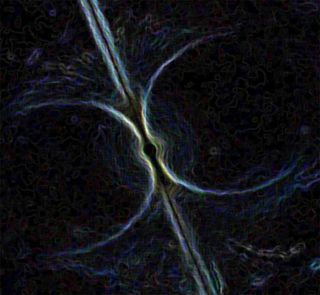
The mechanism responsible for intense X-ray emissions from spinning stellar corpses may not be what astronomers have assumed.
It was previously thought that the energy needed to produce the million-degree hotspots on the poles of a cooling pulsar, as the objects are called, came from collisions of charged particles above the surfaces of the stars.
But a new survey of young pulsars by the ESA's XMM-Newton Observatory suggests astronomers might have had it reversed this entire time, and that heat is being generated inside the stars, not outside.
How cooling stars get hot
Pulsars are spinning neutron stars, which are dead and incredibly dense. Though only about 12 miles (20 kilometers) in diameter, neutron stars have about 1.4 times the mass of the Sun.
When neutron stars initially form, generally after old, massive stars explode as supernovas, they have temperatures of more than a billion degrees. However, they begin to cool rapidly soon after.
Previous observations revealed that pulsars cool themselves by emitting X-rays from three different regions. First, the whole surface of the star is so hot that it sheds energy in the form of X-rays. Secondly, charged particles in the star's magnetic field emit X-rays as they move outwards, along the magnetic field lines. Lastly, younger pulsars have X-ray hotspots at their poles.
Get the Space.com Newsletter
Breaking space news, the latest updates on rocket launches, skywatching events and more!
Missing hotspots
Astronomers used to think the polar hotspots formed when charged particles collided with a pulsar's surface at its poles. But the new XMM-Newton observations are casting doubt on this view.
Observations by the X-ray telescope of five pulsars, each one up to several millions years old, found no evidence of surface X-ray emissions or polar hotspots. It did, however, glimpse the emissions given off by outwardly moving charged particles.
The study, led by Werner Becker at the Max-Planck Institute for Extraterrestrial Physics in Germany, was detailed in the July 10 issue of the Astrophysical Journal.
The lack of surface emissions isn't surprising, the researchers say, since the pulsars have had millions of years to cool, during which time their surface X-rays would have faded to undetectable levels.
Internal heat engines
However, the lack of polar hotspots is unexpected. It shows that that the heating of the polar surface regions by particle bombardment is not efficient enough to account for the X-ray emission the telescope is seeing.
The researchers suggest that instead of charged particles colliding above a pulsar's poles, the X-rays being detected are generated inside the spinning star. This trapped heat is then carried outside of the star by electrons, which are guided to the poles by intense magnetic fields.
This alternative theory explains why no polar hot spots have been detected on the pulsars: Like surface X-ray emissions, the hot spot emissions would have faded with time as the pulsar cooled.
- Top 10 Star Mysteries
- Neutron Star Collisions Common, Study Suggests
- Pulsar's "Fire Hose" Jet May Boost Understanding of Black Holes
- Astronomers Take Measure of City-Sized Neutron Star
- The Strangest Things in Space
Join our Space Forums to keep talking space on the latest missions, night sky and more! And if you have a news tip, correction or comment, let us know at: community@space.com.
Ker Than is a science writer and children's book author who joined Space.com as a Staff Writer from 2005 to 2007. Ker covered astronomy and human spaceflight while at Space.com, including space shuttle launches, and has authored three science books for kids about earthquakes, stars and black holes. Ker's work has also appeared in National Geographic, Nature News, New Scientist and Sky & Telescope, among others. He earned a bachelor's degree in biology from UC Irvine and a master's degree in science journalism from New York University. Ker is currently the Director of Science Communications at Stanford University.
